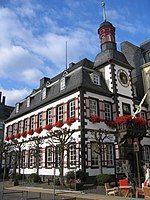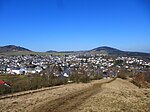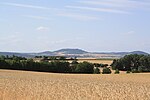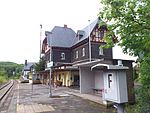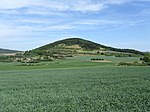Genovevaburg
Buildings and structures completed in the 13th centuryBuildings and structures in Mayen-KoblenzCastles in Rhineland-PalatinateCastles in the EifelHeritage sites in Rhineland-Palatinate
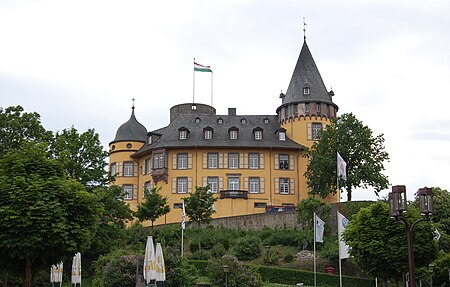
Genovevaburg is a castle standing on the southwestern side of Mayen in the German state of Rhineland-Palatinate. The castle is the symbol of Mayen and has been rebuilt several times since first being destroyed in 1689. Its name comes from a legend, according to which the seats of counts palatine, Siegfried and his wife, Genevieve of Brabant (German: Genoveva), were supposed to be on the same hill in (or above) Mayen. The earliest references linking the legend to this region date to the 17th century. Since when the castle and its bergfried, the so-called Golo Tower (Goloturm), have been linked to the legend is unknown.
Excerpt from the Wikipedia article Genovevaburg (License: CC BY-SA 3.0, Authors, Images).Genovevaburg
Boemundring,
Geographical coordinates (GPS) Address Nearby Places Show on map
Geographical coordinates (GPS)
| Latitude | Longitude |
|---|---|
| N 50.326111111111 ° | E 7.221275 ° |
Address
Boemundring
56727
Rhineland-Palatinate, Germany
Open on Google Maps
